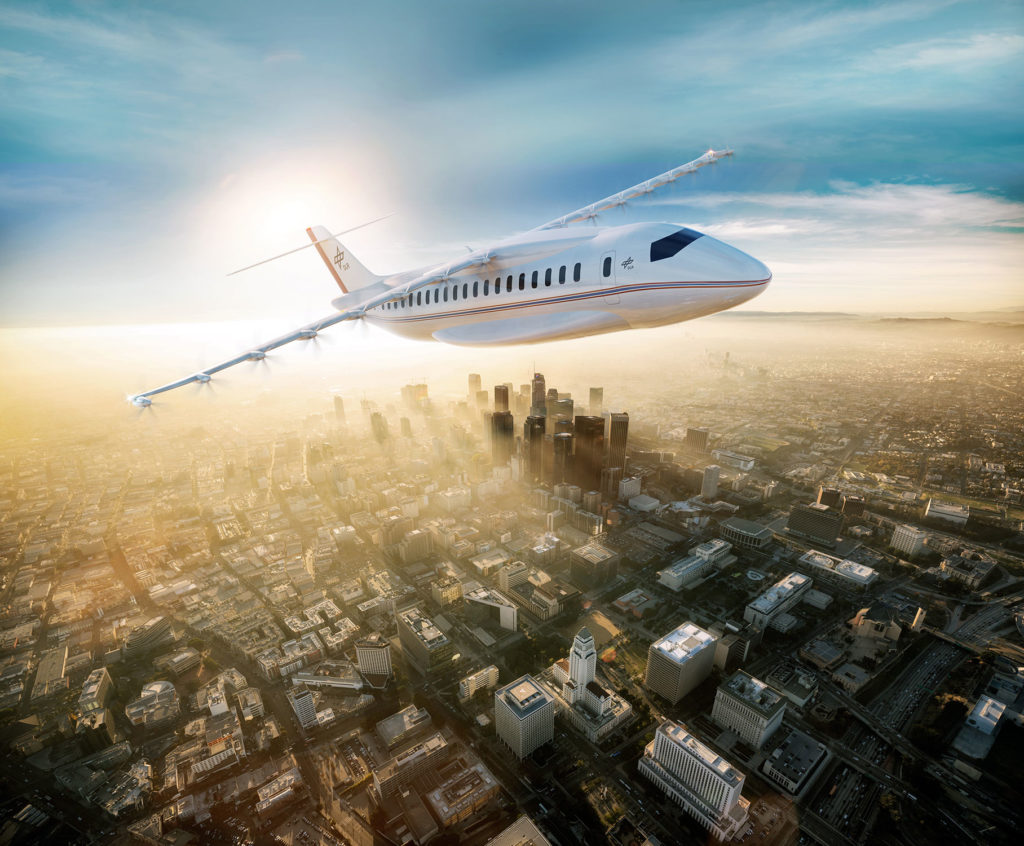Model of a regional aircraft with distributed electric propulsion
The primary objectives of European aviation research, given the growth in air traffic, are to make the air transport system pollutant-free, efficient, quiet and safe. The study of electric propulsion systems plays a decisive role in this. With the concept for a regional aircraft presented here, the arrangement of multiple propulsion units along the wing has made it possible to increase lift and improve propulsion efficiency. The increased lift can be used to reduce the wing area and thus lower the weight and drag. In addition, control of the aircraft can be partially taken over by individual control of the propulsion system motors; this means that some of the control surfaces can be smaller and thus lighter, while producing less drag.
This type of propulsion integration is made possible by electrical power distribution, since implementing the concept with conventional mechanical means is not a serious prospect. The electrical power can be provided by fuel cells or a hybrid system with a gas turbine.
Feasibility studies and performance assessments for this concept were carried out in 2015 at the DLR Institute of Aerodynamics and Flow Technology. The concept will also be studied as part of the Clean Sky 2 project ADEC. Furthermore physics-based simulations are peformed in the German national project “SynergIE”.
Deutsches Zentrum für Luft- und Raumfahrt (DLR)
Dr. Martin Hepperle · martin.hepperle@dlr.de · dlr.de/en
